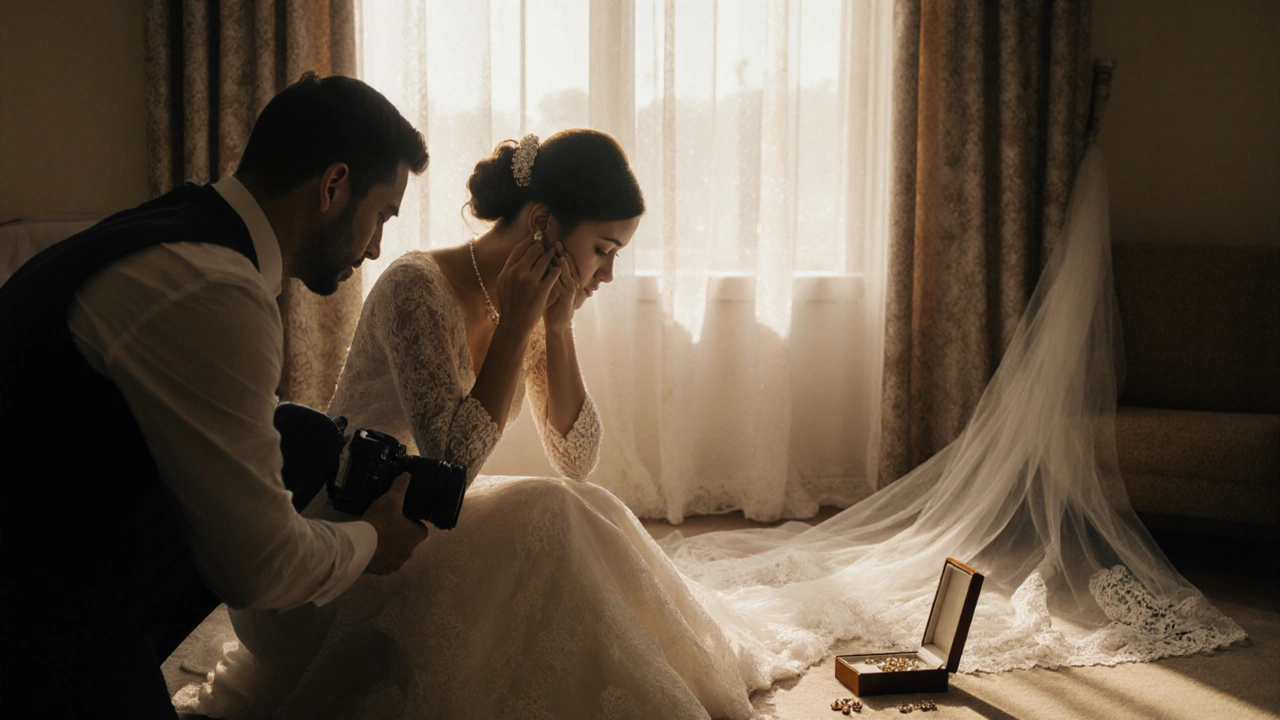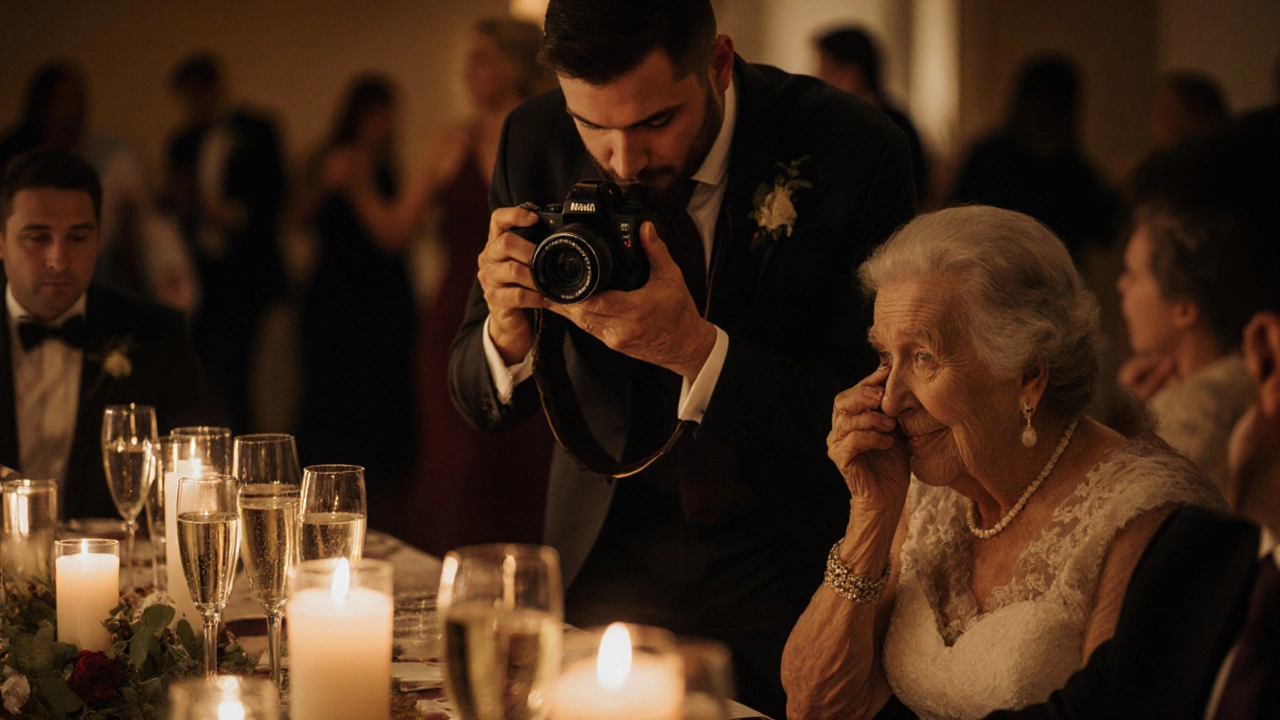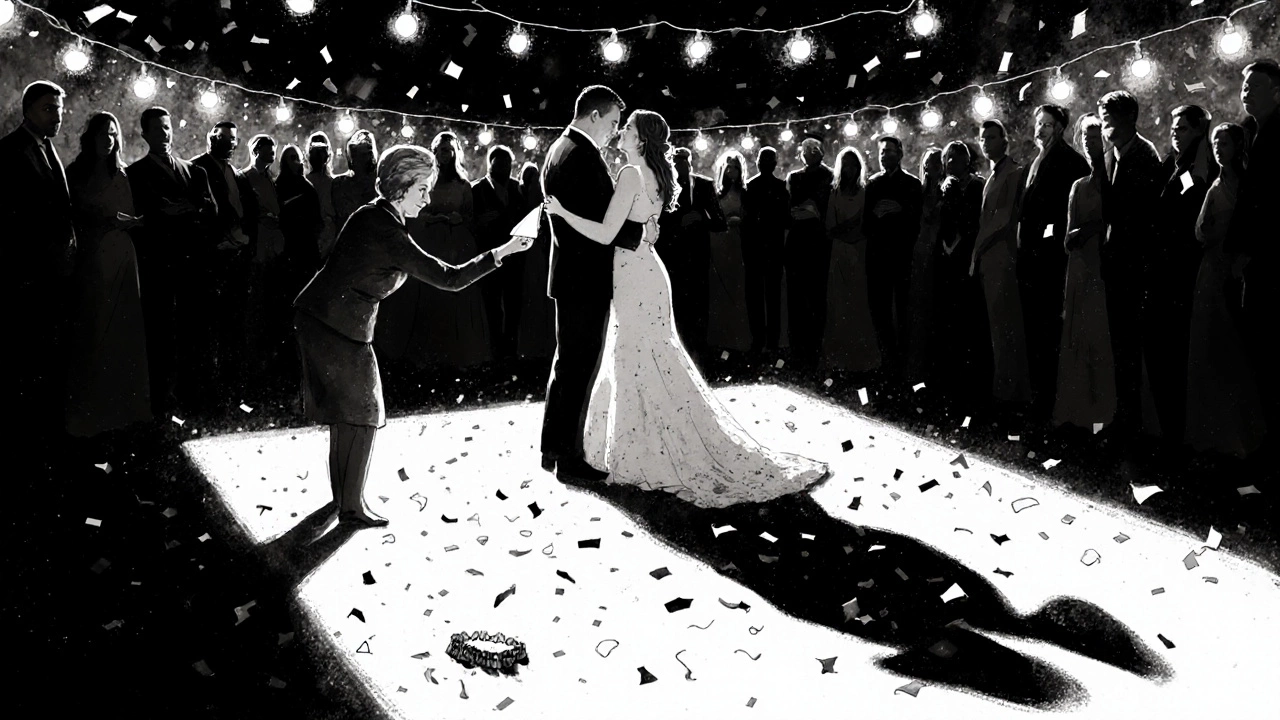What Does a Wedding Photographer Do? A Real Look at Their Job on the Big Day
 Oct, 30 2025
Oct, 30 2025
Wedding Timeline Calculator
Plan your wedding day with realistic time estimates. Professional photographers need flexibility for unexpected delays, so this tool helps you create a timeline that works with your wedding day realities.
Ever wonder what actually happens when a wedding photographer shows up on your big day? It’s not just about pointing a camera and clicking. A wedding photographer is part historian, part storyteller, part crisis manager, and sometimes even a cheerleader. They’re there from the quiet morning moments to the last dance, capturing more than poses-they’re capturing emotion, chaos, joy, and the little things you won’t even notice until you see the photos months later.
They Show Up Early-And Stay Late
Most couples think the photographer’s job starts when the ceremony begins. It doesn’t. A professional wedding photographer typically arrives 2-3 hours before the ceremony. That’s when they capture the quiet details: the bride’s hands as she puts on her earrings, the groom’s nervous smile while tying his tie, the flowers sitting on the table, the wedding rings resting on velvet. These aren’t just pretty pictures-they’re the first threads of the story.
And they don’t leave right after the cake is cut. Most stay through the first few dances, the toasts, and sometimes even the send-off. Why? Because the best moments often happen when no one’s watching. The grandmother wiping a tear. The best man laughing so hard he cries. The bride stealing a kiss with her dad after the crowd clears out. These aren’t staged. They’re real. And the photographer has to be ready for them.
They Plan the Timeline-But Bend It When Needed
Before the wedding, a good photographer will sit down with the couple (or their planner) and build a shot list and timeline. This includes when to do portraits, when to capture the first look, how long the ceremony will last, and when to move to the reception. But no timeline survives first contact with reality.
Weather changes. The bride’s dress gets stuck in a door. The officiant goes long. The photographer doesn’t panic. They adapt. They know that if the golden hour light is perfect at 6:15 p.m. but the ceremony ran 20 minutes late, they’ll rearrange the whole evening to get those shots. They’ll skip a planned group photo to chase the sunset. They’ll move the cocktail hour portraits to the dance floor if the lighting is better there. Flexibility isn’t optional-it’s part of the job.
They Capture More Than Just the Couple
Yes, the bride and groom are the stars. But a wedding photographer doesn’t just take pictures of them. They photograph the whole room. The aunt who cries every time the music changes. The little flower girl who falls asleep mid-reception. The grandfather dancing with his granddaughter. The waiter smiling as he delivers champagne.
These are the photos families keep for decades. The ones they pull out during holidays, anniversaries, or when someone passes away. They’re not just images-they’re emotional anchors. That’s why photographers spend time learning names, relationships, and inside jokes. They know which cousin is the jokester, which uncle always brings the best dance moves, and which grandma will be the first to hug the new spouse. They don’t just take photos. They remember who matters.

They’re the Silent Problem Solvers
Weddings are messy. A bouquet falls over. A garter snaps. The cake topples. A guest spills wine on the dress. A child starts crying during the vows. The photographer doesn’t step in to fix it-they step in to document it. But they also quietly help. They hand tissues to a crying mother. They adjust a crooked veil without being asked. They hold a groom’s tie while he adjusts his cufflinks. They find a quiet corner for a nervous bride to breathe.
They don’t take over. They don’t interrupt. But they’re always there, quietly making sure the day flows. That’s why so many couples say, “I didn’t even notice they were there.” That’s the highest compliment.
They Edit Hundreds-Sometimes Thousands-of Photos
On a typical wedding day, a photographer takes between 1,500 and 3,000 photos. That’s not an exaggeration. They shoot in bursts during the ceremony, in rapid succession during the first dance, and in quiet sequences during the details. After the wedding, they go through every single one.
They delete the blurry ones, the ones where someone’s blinking, the ones with a random person walking behind the bride. Then they pick the best 500-800 and edit them. That means color correction, skin retouching, background cleanup, cropping for composition, and matching the style the couple chose. Some photographers spend 30-50 hours on editing for one wedding. It’s not just clicking a button. It’s craftsmanship.
They Deliver More Than a USB Drive
Most couples expect a digital album. What they don’t always realize is that a good photographer delivers a story. The photos are arranged in a logical flow: the quiet morning, the getting-ready moments, the first look, the ceremony, the reception, the late-night dancing. It’s not random. It’s narrative.
They often include a printed album, a slideshow, or even a teaser video. Some offer online galleries where family members can download their own copies. Others include a printed guestbook with selected photos. The delivery isn’t just files-it’s a keepsake designed to be held, flipped through, and passed down.

They Know the Rules-And When to Break Them
There are traditions: the first kiss, the bouquet toss, the father-daughter dance. But not every wedding follows them. A good photographer doesn’t force a pose that doesn’t feel right. If the couple doesn’t want a first look, they find other ways to capture the emotion. If the family doesn’t want group photos, they focus on candid moments instead.
They know that authenticity beats perfection. A photo of a bride laughing as she trips on her dress is worth more than a perfectly posed shot where she’s stiff and smiling too hard. They’re not just capturing what happened-they’re capturing how it felt.
What They Don’t Do
They don’t direct every movement. They don’t tell the bride to smile bigger or the groom to stop fidgeting. They don’t pose people like they’re in a catalog. They observe. They wait. They anticipate.
They don’t use flashy filters that make everything look like a cartoon. They don’t turn your wedding into a fantasy. They preserve your reality-the messy, beautiful, imperfect reality that’s yours alone.
They don’t work for Instagram. They work for you. For your grandkids. For the day you’ll look back on and say, “I remember that. I remember how it felt.”
Why You Need One
You can’t be in every moment. You’re too busy being the bride or groom. You’re holding hands, saying vows, dancing, laughing, crying. You don’t have time to take pictures. Even if you have a friend with a good camera, they’re not trained to capture emotion under pressure. They don’t know how to shoot in low light without flash. They don’t know where to stand so the sun doesn’t blind the ceremony. They don’t know how to handle a sudden rainstorm or a broken heel.
A wedding photographer is the only person there whose only job is to remember your day. Not just what it looked like-but how it felt.
That’s what they do.